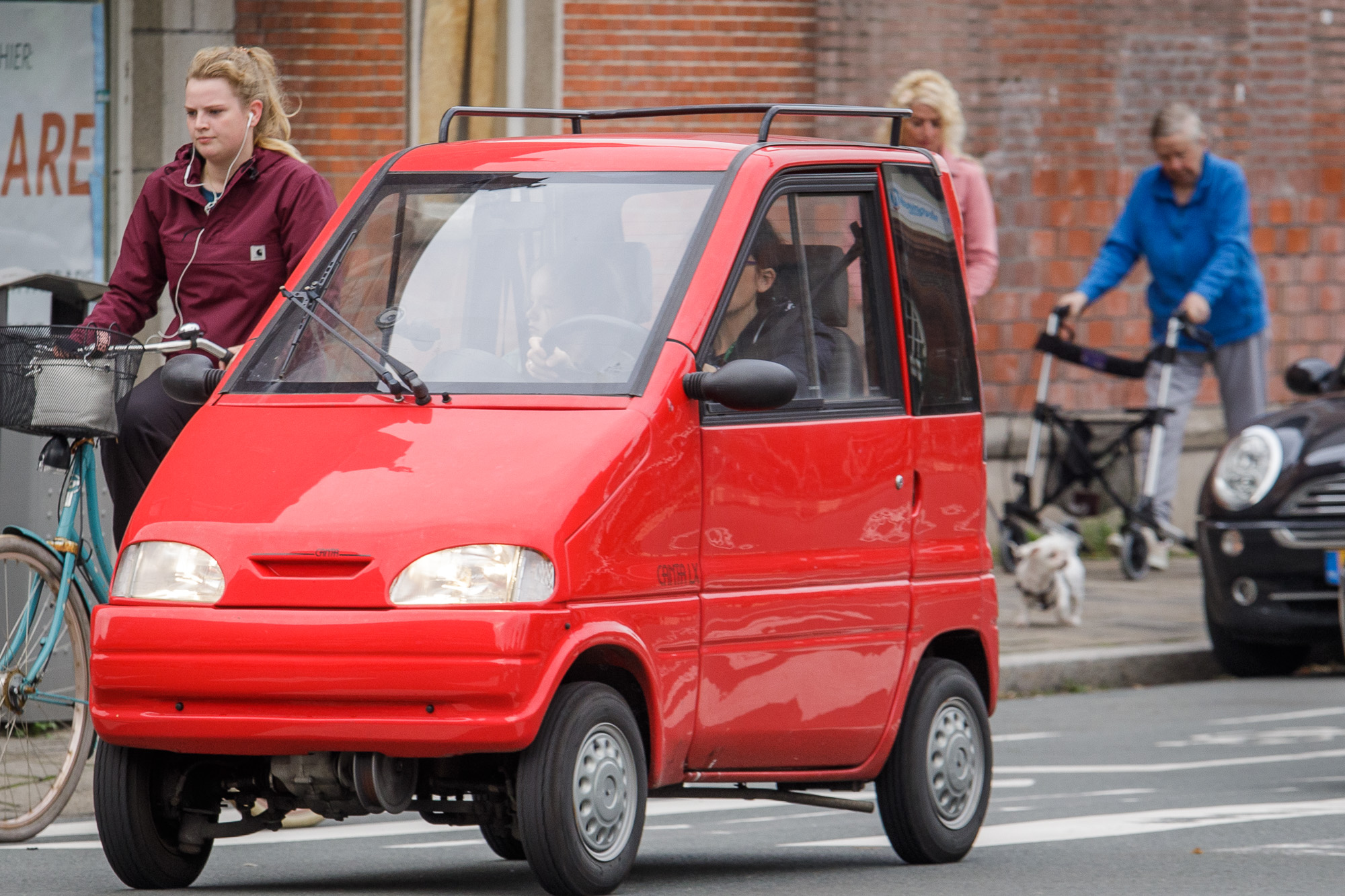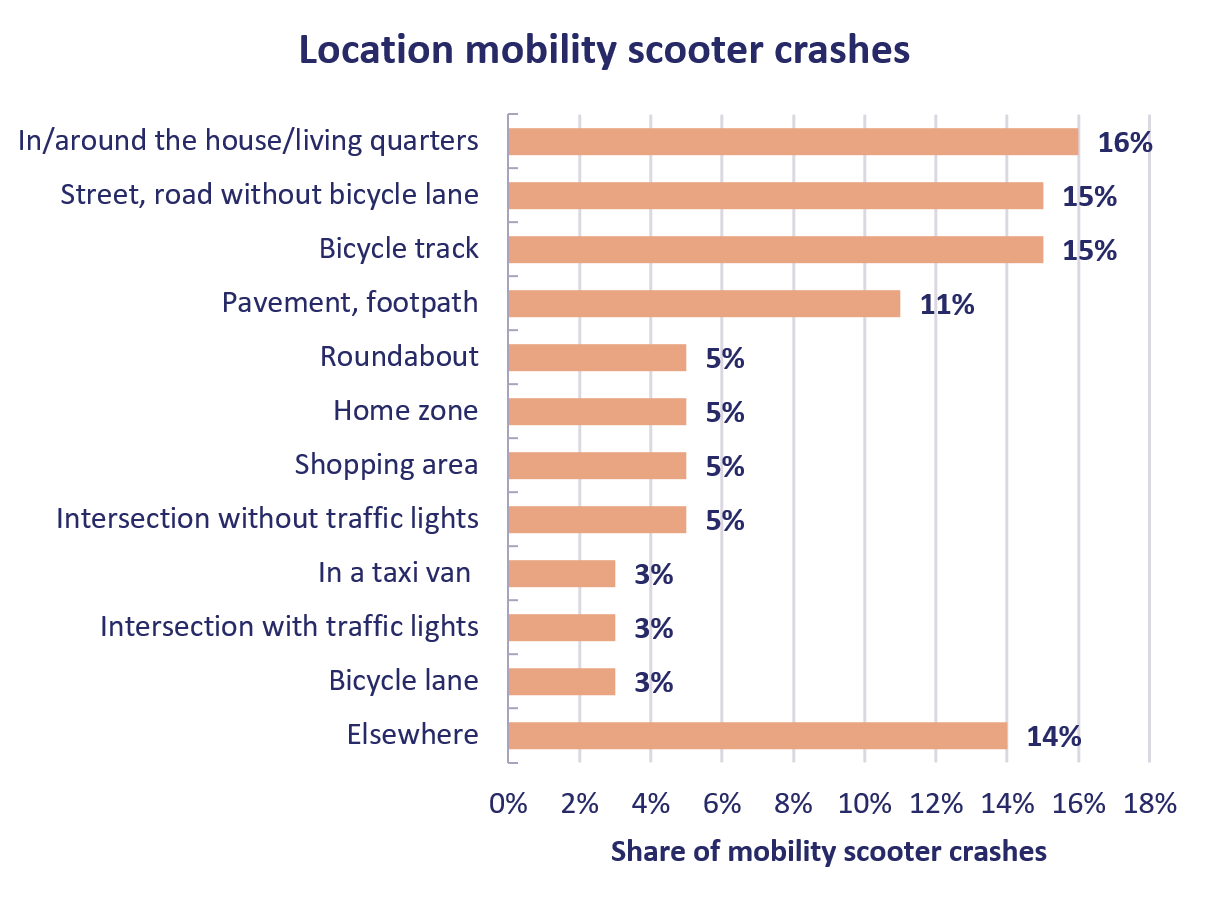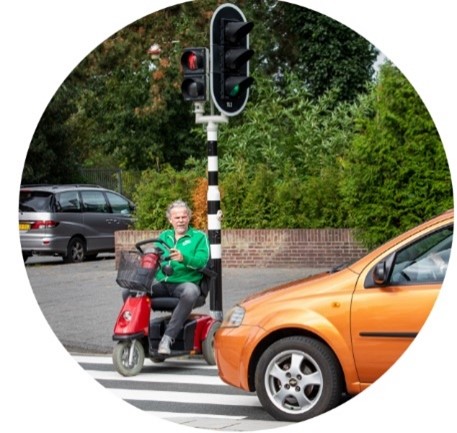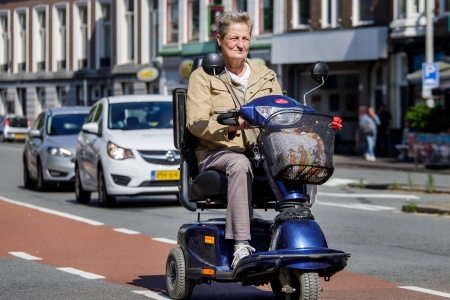Below you will find the list of references that are used in this fact sheet. All sources used can be consulted or retrieved via our Library portal. Here you can also find more literature on this subject.
[1]. Kruyswijk, M. (2019). De Birò wordt aan banden gelegd. Het Parool. Accessed on 27-11-2020 at www.parool.nl/nieuws/de-biro-wordt-aan-banden-gelegd~bc63eff9/?referer=https%3A%2F%2Fwww.google.com%2F.
[2]. Rijksoverheid (2020). Vraag en antwoord. Bijzondere voertuigen. Rijksoverheid. Accessed on 27-11-2020 at www.rijksoverheid.nl/onderwerpen/bijzondere-voertuigen/vraag-en-antwoord/wat-zijn-de-verkeersregels-voor-een-gehandicaptenvoertuig-met-een-motor.
[3]. Rijksoverheid (2020). Regeling voertuigen. Overheid.nl. Accessed on 27-11-2020 at wetten.overheid.nl/BWBR0025798/2020-01-01.
[4]. CBS (2020). Bromfietsenpark. CBS. Accessed on 27-11-2020 at www.cbs.nl/nl-nl/onze-diensten/methoden/onderzoeksomschrijvingen/korte-onderzoeksbeschrijvingen/bromfietsenpark.
[5]. Davidse, R., Duijvenvoorde, K. van, Louwerse, R., Boele-Vos, M., et al. (2018). Scootmobielongevallen: Hoe ontstaan ze en hoe zijn ze te voorkomen? R-2018-15. SWOV, Den Haag.
[6]. Davidse, R., Duijvenvoorde, K. van, Louwerse, R., Boele-Vos, M., et al. (2018). Scootmobielongevallen: karakteristieken, ongevalstypen en kansrijke maatregelen om de veiligheid te verbeteren. Een dieptestudie naar scootmobielongevallen op de openbare weg. R-2018-15A. SWOV, Den Haag.
[7]. ODiN (2018-2019). Onderweg in Nederland ODiN. Centraal Bureau voor Statistiek, CBS en Rijkswaterstaat, RWS. Bewerking SWOV.
[8]. CBS Statline (2020). Bromfietsen; soort voertuig, brandstof, bouwjaar, 1 januari. CBS. Accessed on 30-11-2020 at opendata.cbs.nl/statline/#/CBS/nl/dataset/81540NED/table?ts=1593451071266.
[9]. CBS Statline (2020). Bromfietsen; soort voertuig, bouwjaar, eigendom, leeftijd, regio, 1 januari. CBS. Accessed on 30-11-2020 at opendata.cbs.nl/statline/#/CBS/nl/dataset/80211ned/table?dl=3E676.
[10]. Poort, E., Hertog, P. den, Draisma, C. & Klein Wolt, K. (2012). Scootmobiel ongevallen, een LIS-vervolgonderzoek. VeiligheidNL, Amsterdam.
[11]. Leijdesdorff, H.A., Dijck, T.J.M. van, Krijnen, K. & Schipper, I.B. (2014). Ongevallen met een scootmobiel. Een groeiend probleem. In: Tijdschrift voor Geneeskunde, vol. 158.
[12]. Aarts, L.T., Schepers, J.P., Goldenbeld, C., Decae, R.J., et al. (2020). De Staat van de Verkeersveiligheid. Doelstellingen 2020 worden niet gehaald. R-2020-27. SWOV, Den Haag.
[13]. EuroNCAP (2016). 2016 Veiligheid van quadricycles. EuroNCAP. Accessed on 30-11-2020 at www.euroncap.com/nl/veiligheid-voertuig/veiligheidscampagnes/2016-veiligheid-van-quadricycles/.
[14]. Davidse, R. (2020). Personal communication, June 2020.
[15]. Schepers, J.P. (2005). Eisen aan brommobilisten; de brommobiel: een verrijking voor de mobiliteit of een brom van onduidelijkheid? Rijkswaterstaat Adviesdienst Verkeer en Vervoer.
[16]. RWS (2016). Verkeersveiligheid ouderen: interventies voor beperking van verkeersrisico's bij ouderen anno 2015. Directoraat-Generaal Rijkswaterstaat, Water, Verkeer en Leefomgeving WVL, Afdeling Verkeersveiligheid en Veiligheidsmanagement, Den Haag.
[17]. Kommers, M. & Musters, N. (2003). Ergotherapeutische standaard voor training met elektrische rolstoel en scootmobiel; handleiding & stroomschema. Nederlandse Vereniging voor Ergotherapie NVE, Utrecht.
[18]. VVN (2020). VVN Opfriscursus scootmobiel. Veilig Verkeer Nederland VVN. Accessed on 30-11-2020 at vvn.nl/scootmobiel.
[19]. VVN (2020). Blijf veilig mobiel. Gebruik een scootmobiel. Veilig Verkeer Nederland VVN. Accessed on 30-11-2020 at vvn.nl/thuis/senioren-in-het-verkeer/blijf-veilig-mobiel/gebruik-een-scootmobiel.
[20]. Verstappen, J.F. (2005). Wegwijzer in het verkeer brommobiel - verkeerstheorie en praktijk. Verjo, Sint-Michielsgestel.
[21]. Schepers, J.P. (2007). Gemotoriseerde gehandicaptenvoertuigen. Rijkswaterstaat, Ministerie van Verkeer en Waterstaat, Delft.
[22]. Jonkhoff, L., Zuidema, V., Hoofwijk, M., Sman, C. van der, et al. (2011). Productveiligheid van scootmobielen. Komen tot verbeterde technische veiligheidseisen. Stichting Consument en Veiligheid, Amsterdam.






 Figure 1. Number of mobility scooters supplied by Dutch municipalities between 1999 and 2013, and estimates of the total number of mobility scooters in the Netherlands (1999-2013). Source:
Figure 1. Number of mobility scooters supplied by Dutch municipalities between 1999 and 2013, and estimates of the total number of mobility scooters in the Netherlands (1999-2013). Source:  Figure 2. Number of registered microcars in the Netherlands, 2010-2020. Source: Statistics Netherlands Statline
Figure 2. Number of registered microcars in the Netherlands, 2010-2020. Source: Statistics Netherlands Statline  Figure 3. Development of the number of road deaths among mobility scooter users and occupants of other disability vehicles in 2010-2019. Source: Statistics Netherlands (
Figure 3. Development of the number of road deaths among mobility scooter users and occupants of other disability vehicles in 2010-2019. Source: Statistics Netherlands ( Figure 4. Number of road deaths among users of mobility scooters and other disability vehicles by age group in 2017-2019. Source: Statistics Netherlands (
Figure 4. Number of road deaths among users of mobility scooters and other disability vehicles by age group in 2017-2019. Source: Statistics Netherlands ( Figure 5. Location of mobility scooter crash (Source:
Figure 5. Location of mobility scooter crash (Source: 



 Figure 6. Factors that caused or contributed to the mobility scooter crash. Source:
Figure 6. Factors that caused or contributed to the mobility scooter crash. Source: 


